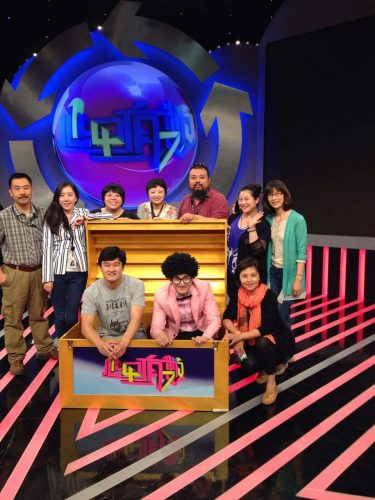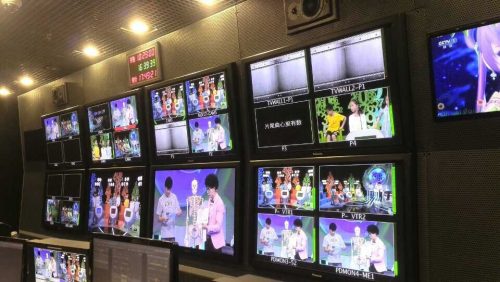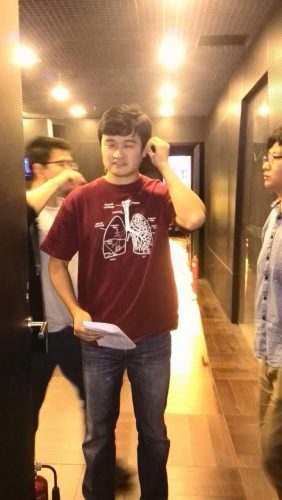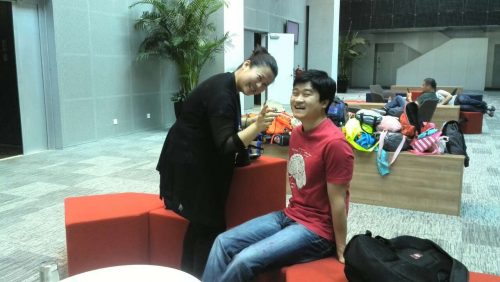My Giant Leap to “GBL”

Content
- All blog articles will be updated in the Learning Technologies category in my blog: 教育技术 Learning Technologies | SciShine
- All badges and other contribution certificates will be accumulated and shown on this page:My Accomplishments at WSSG | SciShine
Let’s Game!
I registered Dr. Danielle Oprean’s Designing Games for Learning in the Fall semester of 2023, the first year of my Ph.D. program at the School of Information Science and Learning Technologies in the University of Missouri. Dr. Oprean is my gaming guide and Arch McGee is my personal advocate.
In my previous learning and working experience, I had a limited understanding of the relationships between games and learning. This is my first formal chance to learn games very seriously since “games” in my mind is the opposite word of “learning.” I will record my takeaways from the course and show my learning progression for the coming months. This course opened a brand-new door for me to Game-based Learning (GBL). To most of my classmates, it might be a small step, but to me, it is my giant leap to GBL.
During this journey, I will broaden and enhance my knowledge and competencies of GBL with conducting rotational practices:
Reading/Play (Play)
Knowledge Challenges (Analyze)
Discussion Board (Commune)
Practice Assignments (Adapt)
Blog Posts (Design)
Level Assignments (Create)

My VR Teaching Experience
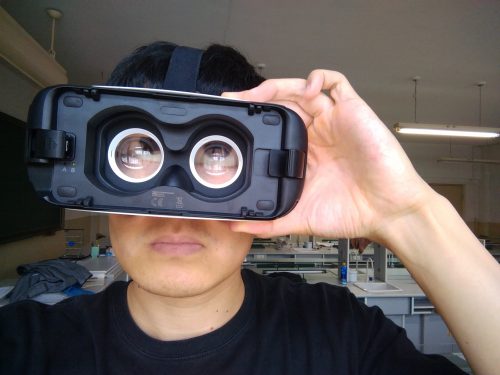
VR (Virtual Reality) was still a fancy name in 2015, especially in K-12 school settings. When I had a chance to use Oculus Rift to teach scientific knowledge in my class, I felt excited and lucky. The first taste of this new staff was an open course to show the availabilities of using VR in everyday instructions. Many observers had limited knowledge about VR, as well as most of my students. So, I used some time to introduce the background of the theory and functions of the Oculus Rift in the beginning. Then, I led all the participants to try some easy softwares to familiarize themselves with the equipment.
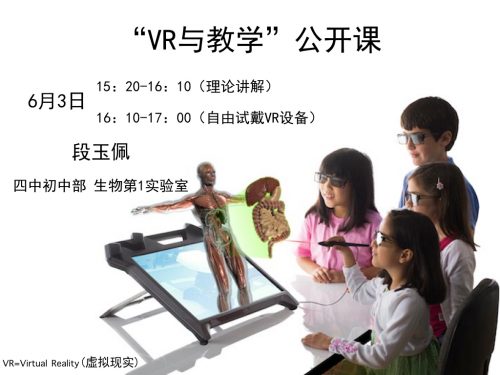
The first open course received a few positive feedback, meanwhile some concerns about the reality of using VR in daily instructions had also been raised, and soon there came the second one, Voyage in Human Body.

I invited the learners, including students and teachers to use their recent learnings in my biology class to do free exploration using Oculus Rift, then explain the phenomena they experienced. Finish the handout by themselves to reach the instructional objectives. The learners were fascinated by both the hardware and software. Some students who are short of learning passion even would like to try and ask more questions about human body structure and functions than usual. VR had the potential to diliver individual instructions.
After the two open courses. I designed and recorded some VR programs. One of them was The Flowers in Beihai Park. If you have VR glasses, you can try it.
There is a lot of potential hidden in instruction with using VR. More professional research and practical reflections need to be done in this area.
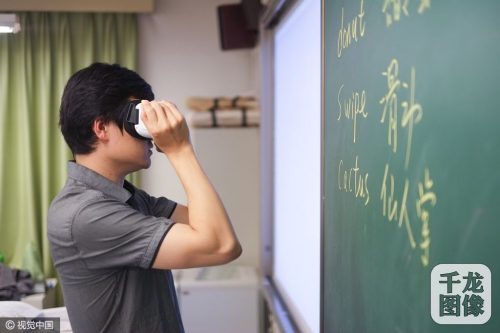
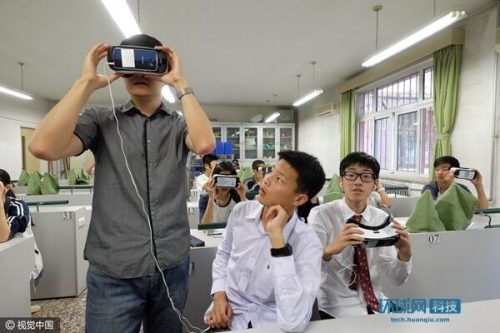
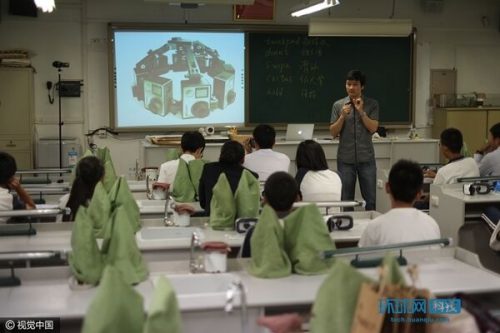
References:
- http://tech.cnr.cn/techit/20160606/t20160606_522327925.shtml
- https://tech.huanqiu.com/gallery/9CaKrnQhtDT
- https://item.btime.com/378v4kal4ou909pqk8lcp1rgvho
How to Assist Online Instructors in K-12 Education in China 如何辅助中国K-12学校教师实施在线教育
How to Assist Online Instructors in K-12 Education in China
Yupei Duan
Curriculum Center, Future Leadership Academy, Hai Nan, China
School of Information and Learning Technology, University of Missouri, Missouri, The USA
December 12, 2020
How to Assist Online Instructors in K-12 Education in China
Background and Significance of the Research
Carliner and Shank (2008) have summarized four key challenges of e-learning: Organizational Barriers, Pedagogical, Technical and Financial Issues. China is faced with most of these issues, together with some unique challenges (Y. Wang et al., 2018a). Teachers are vital component in education. Online teachers have a variety of roles they need to play, such as: evaluator, administrator, technologist, advisor/counselor, researcher, etc. and they should be equipped with multiple competencies (Baran et al., 2011). It is critical to prepare and support teachers for online teaching so that they know what to expect and how to establish their online teacher persona through online pedagogies, and also develop positive attitudes towards online teaching. By incorporating collaborative work groups, community building, and group discussions into professional development programs, and sustaining their continuity, teachers will have an opportunity to participate in communities of practice and transform their teaching by socially constructing their knowledge and practices (King, 2002).
The COVID-19 affected the whole world a lot. It was a test for the online education in different countries and districts. During the pandemic period, educators and students had to rely on online education to continue schoolings. The development of Online education in China has been constrained by a lot of limitations. Zhanyuan Du, Vice Minister of Education of China, has stressed that there are three key tasks for e-learning development in China: “teachers’ and students’ acknowledgement of e-learning, teachers’ capacity for integrating ICT with daily instructions, and production of sufficient quality resources so that teachers can focus on pedagogical design (中国教育信息化要解决三问题 – 信息化动态 – 中国教育信息化网, 2015).” While more teachers in China are equipped with the basic Information and Communication Technology (ICT) knowledge and skills and get more knowledge about e-learning, the situation of China’s online education might be better. Since ICT is the foundation of online education, teachers who have more abilities about ICT, who could understand the value and usability of online education, who might integrate ICT more in their daily instructions, and who have more possibilities to yield higher-quality online education production.
Problem Statement
This study aims to explore the experiences, suggestions and standards for assisting online instructors to present higher-quality online instructions drawing mostly from the USA, and introduces some useful strategies from institutes who have been endeavoring to establish high standard online education from all over the world to China’s K-12 schools. With practice and comparation to make the most suitable one for China.
With collecting data from practices in some volunteer Chinese K-12 schools, the researcher wants to finish the first draft of Chinese K-12 online education standards and design some useful in-service or pre-service trainings for Chinese online instructors.
Purpose of the Study
The researcher will focus on the online education at China’ K-12 school context among the different types of online education. The COVID-19 pandemic has made all stake holders at schools: parents, students, educators and administrators to realize the value of high quality of online education much better. There are a lot of startups and E-giant companies are seizing the profit of online education by inventing new Apps and platforms, and establishing online courses and commercial training programs to the K-12 students in China. There has been so much growth in this market that the government has issued a lot of regulations to control them(Growth of China’s Online Education Industry Spurs New Regulations, 2020) . The fast increase need of high-quality online education from learners are apparent. Yet the supportive standards for evaluating and establishing online education were limited in China. On the other hand. If the students can get high quality online education from their own school with their familiar educators and yield more learning outcomes, why they need to pay extra money out of school? The more expansive thing for the learners is not money but time.
The author could not find formal instructions to assist teachers about how to do high-quality online teaching in Chinese. However, there is a great deal of information in English. What kinds of online teaching standards, teaching strategies suggestions the Chinese online educators need currently? What kinds of online learning tips Chinese learners should be aware of to yield higher online learning outcomes? Is the information workable, effective and efficient? The mixed-methods will be used during the research.
Literature Review
Sources deemed most relevant to the topics were selected for further analysis; preference was made to recent (published during 1999-2020) articles, but older sources were included especially the classical ones which contain impressive points and suggestions. These articles were searched and collected through google scholar and University of Missouri Columbia Libraries, utilizing the following search tactics: K-12, Online Education, Online Teaching, Standards, etc.
Online Education Definition and its Development in China
E-learning, also known as online learning, digital learning or computer-based learning, can be defined as education provided on digital devices that support learning (Clark & Mayer, 2011). The use of Information and Communication Technology (ICT) in education has given rise to diversified pedagogical models and methods, including networked learning, multimedia education, online and open education, and blended learning. In China, the term ‘ICT in Education’ is used interchangeably with the more general term ‘e-learning’ (Y. Wang et al., 2018b). With rapid economic development, China is becoming able to provide better infrastructure and other necessary conditions for schools (e.g. more high-quality computer labs, more learning soft wares and more online learning strategies), E-learning is believed to be a promising approach since it offers students ways to interact with experienced teachers or professors (Q. Wang et al., 2009).
In the first four years after 1996, the growth of online schools (at China) was fast, and the concepts of e-learning and online school were formulated. In the following four-year adjusting stage, the number of online schools decreased remarkably as some investors and managers of over-emphasized on financial gains but while ignoring Standards of web-based education. At the steady stage(2005-2009), managers and teachers have paid more attention to the educational role of online schools. They have developed better understanding and an improved model of cooperation. For example, one of the styles of cooperation is named “Two Instructors Cooperation Model” which means while one instructor teaching virtually, there is the other instructor (teaching assistant) working in the physical classroom to direct the students to dig more from the online instructions.
There are three models of running K12 online schools in China. Some online schools are run by a consortium of the government, or by an enterprise or a school alone. Most online schools in China are supported by private enterprises (Q. Wang et al., 2009). Online education, also known as virtual or cyber schooling, is a formal of distance education that uses the Internet and Computer technologies to connect teachers and students and deliver curriculum. Students may also communicate online with their classmates, students in other schools around the world and experts to whom they might otherwise not have access. Online learning may take the form of a single course for a student who accesses that course while sitting in a physical school, or it may replace the physical school for most or all of a student’s courses (Watson & Gemin, 2010).
K12 Online Education Market in China
In 1996, China’s first primary and secondary education website (online school), 101 online school, was established. Four year later, the Beijing No.4 Online School was built. The education at this time was mainly based on academic education, and the form was mostly based on a single form such as text mail. The interactive form was not strong, mainly based on traditional education methods (Chen et al., 2009). Students and online teachers could only use text to do interactive activities. There were no other choices for the online learners in China who wanted to get higher quality K-12 online instructions. The reasonable online instructions should be more interactive which requires the online instructors to communicate with the learners closely and share the feedback of the learners’ information with their parents frequently. Online instructors need to foster the online learners’ enthusiasm and interest in learning. It is also the online instructors’ duty to embed more technique tools and enhance their skills to improve their online teachings (Hu & Meyen, 2013).
Both Beijing 101 school and Beijing No.4 School are two of best high-schools in Beijing, China. (The author worked at Beijing No.4 School for ten years and has learnt that there were very few requirements for online instructors who taught at Beijing No.4 Online School.) In the past decade, online education market in China changed so fast. More and more companies like “Gen Shei Xue”, “Hao Wei Lai”, “New Oriental School”, etc. have stepped into the K-12 training market to set very high standard and expectations of online education. The parents would prefer to pay more money to buy better online education from these kinds of companies for they keep improving their online teaching strategies (Huang & Hong, 2017).
Quality of Online Teaching
To help China’s K-12 online instructors improve is the first step to get high-quality K-12 online education. Without clear and specific goals, the online instructors will lose themselves and cannot improve their online instructions highly (Baran et al., 2011). There are a lot of mature online teaching standards and suggestions written in English world which might be meaningful for Chinese colleagues.
In 2010, an international quality standard for e‐learning programs – “Open ECBCheck” – was officially released. ECBCheck is an accreditation and quality improvement scheme for e‐learning programs which supports organizations in measuring the success of their programs and allows for continuous improvement though peer collaboration. It was developed through an innovative and participative process involving more than 40 international, regional and national capacity‐development organizations (Open ECBCheck – Quality Improvement Scheme for E-Learning Programmes | GIZ Global Campus 21, n.d.).
In the standards (E-Learning Methodologies – A Guide for Designing and Developing e-Learning Courses, n.d., p. 14), the quality of an e-learning course is enhanced by: (1) Learner-centered content: E-learning curricula should be relevant and specific to learners’ needs, roles and responsibilities in professional life. Skills, knowledge and information should be provided to this end. (2) Granularity: E-learning content should be segmented to facilitate assimilation of new knowledge and to allow flexible scheduling of time for learning. (3) Engaging content: Instructional methods and techniques should be used creatively to develop an engaging and motivating learning experience. (4) Interactivity: Frequent learner interaction is needed to sustain attention and promote learning. (5) Personalization: Self-paced courses should be customizable to reflect learners’ interests and needs; in instructor-led courses, tutors and facilitators should be able to follow the learners’ progress and performance individually.
The third edition of American National Standards for Quality Online Teaching purposely provided the K-12 online and blended learning community with an updated set of openly licensed standards to help evaluate and improve online courses, online teaching and online programs with the contribution from another two documents known collectively as the : American National Standards for Quality Online Programs and American National Standards for Quality Online Courses (Powell et al., n.d. P5). The set of standards served to inform the team, allowing them to make community and research supported updates. Subsequently, author took time to evaluate each standard and found they met the following criteria: measurable, valid, complete, relevant, and specific. Chinese online instructors can check the standards with clear definitions and explanations with examples to transfer to their online teaching actions.
Besides the formal standards which can help online instructors clarify their to-do lists about how to provide appropriate online instructions, the suggestions from some institutes are useful to bring more insights to improve online education for K-12 online instructors, especially during the COVID-19 pandemic spread period. The Danielson Group Remote Teaching Guide (Danielson Group Remote Teaching Guide.Pdf, n.d.) is one of them. Each academic year, the subject teachers in the author’ school will provide at least two class periods to be observed by the members in Academic Department to show their teaching abilities which we name them formal observations. The Academic Department members will use the Framework (Danielson, 2014) for teaching from the Danielson group for assessing subject teachers’ formal observations. The Remote Teaching guide is reflected in Framework for Teaching which shared eight suggestions to online instructors from knowing and valuing the online learners to build responsive learning environment, then to engaging students in learning. The online instructors will find more valuable strategies and tips to miss overwhelming when they conduct online instruction if they delve into deeper with reading and practice the suggestions in the guide.
Trainings for Enhancing Instructors’ Online Teaching Competencies
As online learning grows in K-12, the need to prepare quality online instructors increases (Borup & Evmenova, 2019). There are a lot of barriers the quality online K-12 instructors need to learn to cross. The barriers between the good online K-12 classroom and low efficiency which were listed two decades ago still affect online instructors. The barriers are: Academic, Fiscal, Geographic, Governance, Labor-Management, Legal, Student support, Technical, Cultural (Berge & Mrozowski, 1999). If the teachers did not learn how to face to the barriers when they were in the college, they may get some in-service professional development (PD) programs to help them add this part of competencies. If the PD programs are held fluently, the learners may improve their online teaching skills and knowledge (first-order barriers to change) and nurturing positive attitudes and dispositions (second-order barriers to change) (Borup & Evmenova, 2019). The online PD itself is a good model to show the learners about what is a good online course you need to learn to conduct. There are a lot of difference between face-to-face teaching and online teaching. Barbour (2012) found that the different competencies were required to deliver high quality online teaching. Even the experienced face-to-face teachers might fail to present quality online instructions. The effective PD program will deliver content and assignment proved effective at increasing faculty members’ knowledge and skills, but it was the course delivery and the opportunity to learn as an online student that appeared to most impact faculty members’ attitudes and perceptions of what was possible in online learning environments. In other words, the method was just as important as the message. When designing professional development courses, universities (or other departments) not only need to consider what will be learned but how it will be learned. If courses do not model effective online instruction, they run the risk of increasing faculty members’ skills without improving their practice (Borup & Evmenova, 2019). There are some successful PDs like Borup and Evemenonva’s PD ( 2019) which covers the following topics: (1) course design and development, (2) assessment and feedback, (3) student collaboration, (4) discussions, and (5) presence and support.
Methodology
- Mixed-Method
The mixed-methods will be used. While conducting a bibliometrics focus on online teaching, hybrid teaching, online education standards, etc. The information will be concluded and compared to be selected as suggestions for assisting Chinese K-12 online teachers in their trainings and in-service instructions. Then, some questionnaires will be distributed to online educators, learners and parents to get their feedback about online instructions. The data will be used by qualitative and quantitative methods to test which suggestions or standards will be useful to the online instruction stake holders.
- Research Model
- Brief rationale for the selected approach
With the qualitative and quantitative research, the researcher can collect more divisions of feedbacks about online instructions from online teachers, learners and parents. The aims of the research are figuring out the most reasonable and workable assistance to Chinese K-12 online instructors. We hope to stand on the giant’s shoulder and face to the reality of China’s K-12 online education to compose two documents: Chinese Online Instruction Standards, and Chinese Online Instruction Suggestions, besides that, we will develop PD programs to assist Chinese K-12 online instructors. We wish they are reasonable and meet China’s online instructors’ expectations. Due to the different cultural and historic backgrounds in China and other countries or districts, the experiences from others must be improved to be embedded in Chinese education context. That will be the researcher’s following research aims.
Variables
Independent variables: online teaching standards with using or not; online teaching suggestions with delivering or not; Weather took part in the PD for assisting online instructors developed by researcher.
Dependent variables: Online teachers’ instructional performance scores with using online teaching standards to evaluate; Teachers’ online instruction materials establishing time using before and after training; Teachers’ degree of satisfaction of online instruction before and after training; Online learners’ degree of satisfaction of online education; Parents’ degree of satisfaction with online education.
Sample
170 online learners from primary school, secondary school and high school.
50 online teachers from Future Leadership Academy (a private K-12 school).
100 college students who want to be teachers after graduation at Beijing Normal University.
100 in-service teachers in China K-12 schools.
100 parents whose kids are having online courses.
Data Collection
Qualitative data: Survey, interviews
Quantitative data: Survey, formal observations, data record on learning management system, interviews
Ethical Considerations
Students and parents’ privacy protection. The data from the students and parents will be ONLY used for research and will not be open to others without erasing the names of the students and parents.
Data Analysis
Correlation Analysis using SPSS
Timeline
February, 2021. Preparation period:
In the coming school-wide professional development program, the research proposal will be informed.
February, 2021. Transition period:
the online instructors will be required to having online teaching trainings. The suggestions and strategies will be shared with them as well.
March, 2021. Orientation period:
- The online learners and parents will be delivered online education orientation with introducing more details of online courses and suggestions for online learnings.
- The online instructors will be directed to have online trainings with sharing more online teaching standards.
April-June 2021. Formal online instructions conduction
- Data collection.
- Survey
- Interviews to teachers, students and parents.
July 2021. Data analysis and reaching a conclusion
References
Baran, E., Correia, A.-P., & Thompson, A. (2011). Transforming online teaching practice: Critical analysis of the literature on the roles and competencies of online teachers. Distance Education, 32(3), 421–439. https://doi.org/10.1080/01587919.2011.610293
Barbour, M. k. (2012). Training teachers for a virtual school system: A call to action. In Developing Technology-Rich Teacher Education Programs: Key Issues. IGI Global.
Berge, Z. L., & Mrozowski, S. E. (1999). Barriers to Online Teaching in Elementary, Secondary, and Teacher Education. https://doi.org/10.21432/T2P59B
Borup, J., & Evmenova, A. (2019). The Effectiveness of Professional Development in Overcoming Obstacles to Effective Online Instruction in a College of Education. Online Learning, 23(2), Article 2. https://doi.org/10.24059/olj.v23i2.1468
Carliner, S., & Shank, P. (2008). The e-learning handbook: Past promises, present challenges (MU Ellis Library). Pfeiffer.
Chen, L., Wang, N., & Qiao, A. (2009). K12 online school practice in China. Campus-Wide Information Systems, 26(2), 137–144. https://doi.org/10.1108/10650740910946864
Clark, R. C., & Mayer, R. E. (2011). E-learning and the science of instruction: Proven guidelines for consumers and designers of multimedia learning (MU Online; 3rd ed.). Pfeiffer.
Danielson, C. (2014). The framework for teaching: Evaluation instrument.
Danielson Group Remote Teaching Guide.pdf. (n.d.).
E-learning methodologies—A guide for designing and developing e-learning courses. (n.d.). 141.
Growth of China’s Online Education Industry Spurs New Regulations. (2020, March 12). China Briefing News. https://www.china-briefing.com/news/growth-chinas-online-education-industry-spurs-new-regulations/
Hu, X. C., & Meyen, E. L. (2013). A Comparison of Student and Instructor Preferences for Design and Pedagogy Features in Postsecondary Online Courses. In Curriculum, Learning, and Teaching Advancements in Online Education. IGI Global.
Huang, X., & Hong, W. (2017). Live Streaming Teaching Applied in Real English Classroom. DEStech Transactions on Social Science, Education and Human Science, 0(aems), Article aems. https://doi.org/10.12783/dtssehs/aems2017/8278
King, K. P. (2002). Educational technology professional development as transformative learning opportunities. Computers & Education, 39(3), 283–297. https://doi.org/10.1016/S0360-1315(02)00073-8
Open ECBCheck – Quality improvement scheme for E-Learning programmes | GIZ Global Campus 21. (n.d.). Retrieved October 28, 2020, from https://gc21.giz.de/ibt/var/app/wp342P/1522/index.php/open-ecbcheck/
Powell, A., Oliver, W., Archambault, L., Borup, J., Boyarko, M., Cavanaugh, C., Copeland, R., Day, J., DeRosa-Davis, T., Deschaine, M., Graham, C., Hanson, E., Hernandez, B., Imbrunone, M., Kennedy, K., Consulting, K. K., Kolar-Burden, J., Little, T., Loomis, K., … Online, P. (n.d.). National Standards for Quality Online Teaching. 33.
Wang, Q., Zhu, Z., Chen, L., & Yan, H. (2009). E‐learning in China. Campus-Wide Information Systems, 26(2), 77–81. https://doi.org/10.1108/10650740910946783
Wang, Y., Liu, X., & Zhang, Z. (2018a). An overview of e-learning in China: History, challenges and opportunities. Research in Comparative and International Education, 13(1), 195–210. https://doi.org/10.1177/1745499918763421
Wang, Y., Liu, X., & Zhang, Z. (2018b). An overview of e-learning in China: History, challenges and opportunities. Research in Comparative and International Education, 13(1), 195–210. https://doi.org/10.1177/1745499918763421
Watson, J., & Gemin, B. (n.d.). A Parent’s Guide to Choosing the Right Online Program. 23.
中国教育信息化要解决三问题—信息化动态—中国教育信息化网. (n.d.). Retrieved October 28, 2020, from http://www.ict.edu.cn/news/n2/n20150525_24914.shtml
Read More芝麻开门:心里有数
节目视频:
更多节目视频:
- https://tv.cctv.com/2014/07/01/VIDE1404144198858275.shtml
- https://tv.cctv.com/2014/06/23/VIDE1403519803581382.shtml
- https://tv.cctv.com/2014/09/15/VIDE1410777764180996.shtml?spm=C53164524413.PiO46V57RPrb.0.0
- https://tv.cctv.com/2014/09/22/VIDE1411400175918174.shtml?spm=C53164524413.PiO46V57RPrb.0.0
- https://tv.cctv.com/2014/09/29/VIDE1411986102707878.shtml?spm=C53164524413.PiO46V57RPrb.0.0
- https://tv.cctv.com/2014/10/13/VIDE1413196614380131.shtml?spm=C53164524413.PiO46V57RPrb.0.0
PBL: Virtual Global Biodiversity Research 虚拟环球生物多样性调查
项目介绍:项目网站:https://duanyp.wixsite.com/biodiversity
Read More礼物
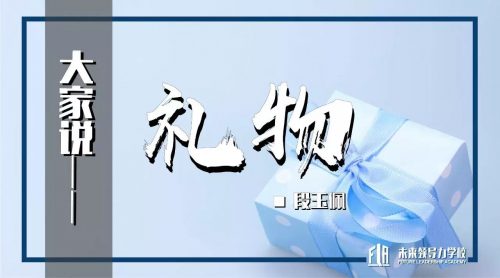
刚刚过去的新春佳节,你收到了怎样的礼物?
礼物,不是一个简单的事物。PRESENT is a special gift.
动画电影《功夫熊猫》中,龟大师(加拉帕戈斯象龟)对阿宝(大熊猫)说了一句话:“昨天是历史,明天是未知,只有今天是个礼物……”很多观众纳闷——逻辑何在?殊不知,英文原作中的龟大师是这样说的:“Yesterday is history, tomorrow is a mystery, and today is a gift…that’s why they call it PRESENT.” 原来,英文单词“Present”有多重含义,作为名词翻译成中文,既有“礼物”的意思,也可用于表达“现在”。
在英文使用者看来,这句台词是很漂亮的双关语,但如果仅用中文理解,可能不仅get不到龟大师的精妙点拨,还会觉得这老龟怎么逻辑牵强,思维混乱?中文世界中,我国宋代朱敦儒写的“领取而今现在”,多多少少表达出了“现在”就是“礼物”的感觉,境界颇可比肩“龟大师”,也难怪朱师别号“岩壑老人”。无论是动画片中龟大师的原型——加拉帕戈斯象龟,还是朱敦儒别号中的“老人”,都给人一种感觉,他们历经沧桑,他们淡然恬静,他们一把年纪……
小时候我听过一个笑话:
一个老人申请当兵。
中士问:多大岁数了?
老人答:六十二岁。
中士说:你应该知道,这个岁数太大了!
老人答:也许当士兵是大了些,可你们难道不需要将军吗?
仅仅走过时间,虚掷年华,即使须发皆白如风清扬,比划两招也还是要露馅的。从小到老是个自然现象,从士兵到将军则是个成长过程,后者是需要“主动不断地在时间流逝中领取而今现在”才可修为而成的。走过很多昨天的人叫“老人”,知道很多答案的人叫“老师”。
为什么当老师?
我是一个年轻的“老”师,从教十年中,我不断被人问起,“你为什么当老师?”我的答案很简单:第一,想让自己变得更好。第二,想让更多人变得更好。
宇宙无边,岁月悠悠,芸芸众生,来了又走,像无风的北京夏日午后,镜面一般凝滞的昆明湖水。我们生活在茫茫宇宙中的一颗蓝色的星球上,地球之于宽广的宇宙,犹如微不足道的一粒粉尘。1977年美国的Eames夫妇制作了一部名为《10的n次方》(Powers of Ten)的影片,镜头从芝加哥的一个湖边开始,视角以10的次方累加,不断扩大,先开始你还可以看到草坪上野餐的人,之后视角持续以10的次方扩大,当扩大到10的24次方时,地球、太阳系、银河系全都变成了微不足道的“粉尘”。
影片的视角虽然放大到这里就暂停了,可是我们的宇宙其实正在加速膨胀呢……还是让我们回到地球上来吧。
“在一块灰暗的石灰岩上,哪怕是有一点微弱的闪光也就足够了。你屏住呼吸,脉搏加快,眼睛闪亮,用锤子轻轻一敲,石灰岩便裂开了——于是就在你的眼前,一个闪亮的贝壳盘绕在岩石上。它与现今存在的海洋贝壳相像,但它可能是1.5亿年以前,甚或是更遥远的5亿年前的海洋贝壳。告诉你一件千真万确的事——你发现的这个贝壳,是第一次被人类的眼睛看到……正是这种刺激吸引着一代又一代的孩子,在悬崖和采石场间攀爬,在海岸和砾石坑中寻觅,引导着他们踏上漫漫发现之旅的,是追寻这个星球,以及生存于星球之上的众生的过去……”
大卫.爱登堡爵士(Sir David Attenborough)在《探寻化石之旅》(Travels with the Fossil Hunters)一书的序言里,对于化石探索过程中的兴奋心情的描述跃然纸上。兴奋如此为哪般?因为触摸化石,即是触摸到了亿万年间的沧桑……人类的历史到底有多长?如果把地球46亿年的演化史比做我们现在的一个昼夜,即24小时,那么人类从出现到今天,则只持续了这一天中的最后半分钟!想象一下吧,到了23时59分30秒,地球上才出现了我们的猿人祖先。人生一世,不过百年,相对于整个地球的46亿年历史和宇宙的138亿年历史,人生,是多么微不足道的一瞬间?我曾在野外考察中,手中摩挲着一块刚刚采到的哺乳动物牙齿的化石长久发呆,感慨着:
谁的眼神可以穿越亿万年
看沧海变桑田
生命是地球最最美丽的赞叹
却只用了一瞬间
凯恩斯(John Maynard Keynes)说过:“长远来看,我们都会死”。你选择怎样对待自己,这只有一次的人生旅程?我的选择是,尽可能充分地参与到这倒计时的生命之旅中。如何充分参与?让自己变得更好,让更多的人变得更好。我当了10年老师,浅尝了这两点。唐代韩愈作《师说》,谓“师者,所以传道授业解惑者也”。在我看来,“传道授业”让我变得更好了,我通过“解惑”让更多的人变得更好了。
想要更好地“传道授业”,就要对所要传授的内容做到精通,为了做到精通,就需要刻意练习。有一次,同组的卓老师问我,你喜欢做公开课吗?我说不是全喜欢,她问,那你为什么做这么多公开课?我说,一是可以逼着我练习,二是虽然公开课的准备很难受,不喜欢,但上完之后的成就感很强,很幸福。三是上公开课的时候,别人给你录像,记录下来你现在玉树临风的青春风采,多年之后拿出来看看,多好的事儿啊?把”现在的自己“记录下来,就是送给”未来自己”的礼物啊。Present is a special gift to the future.
能够为学生传道授业解惑的老师,在韩愈看来是合格的,但我觉得在这之上,师者还要做更高的登攀——教会学生“质疑”。“解惑”是老师解开学生心中的谜团,而“质疑”则是老师让学生主动在心中造成谜团。解惑是学习的结束,往往豁然开朗;质疑是研究的起点,常常曲径通幽。在我看来,当学生能够提出更好的问题,对所学内容进行质疑时,会对当前的学习内容,有更深刻的理解和把握。我在自己的课堂上,硬性设置了15%的平时成绩,来督促学生们提问,只有那些问到我答不出来的学生,才能拿到这15%的成绩。
我的邮箱,时不时地会收到曾经学生发来的邮件,虽然他们早已毕业离开学校,但我们依然联系紧密,是很好的朋友。有一个学生常常会随信发来照片,照片上没有人物,都是自然现象。有北极的冰川,欧洲的郊野,英伦的乌鸦,非洲的夕阳……她在信中说:“因为你在课上讲过,很多生命现象都转瞬即逝,无数自然现象的背后,都蕴藏着巨大的秘密,要善于观察,养成随时记录的良好习惯。这个习惯我一直保持着,非常受益。谢谢你。”这位同学先在英国爱丁堡大学学习地质学,后在伦敦大学学院学习考古学。
去年春节,我在美国开车从加州北部去旧金山湾区,途径伯克利,想到有几个学生在那读书,就提前约了他们吃晚饭。为了省几美元停车费,我特意将车停的离加州大学伯克利分校远远的,当我气喘吁吁地跑到约定地点时,早迟到了。学生们问我怎么回事,我讲清缘由后,他们都笑我,“老师,周末湾区停车免费。”好吧,现在,你们可以给我当老师了。饭局持续的太久,我后来混进郭同学的宿舍过夜,就谁在地板上睡睡袋?谁睡床?我俩进行了猜拳——输掉的我第二天从睡袋中醒来腰疼这事儿,你以为我会轻易说吗?
今年春节前,曾经我所教班级的生物课代表,孙同学开心地和我分享,他已经收到了哈佛大学某神经科学项目的研究生录取通知书。真不敢想象,就在几年前,他还是一个用麻雀做动物行为观察实验的稚嫩小男生呢。
感谢我的学生们,感谢他们和我曾经共度的时间,我有幸和他们共享了礼物——Present——我们“领取而今现在”。
“Yesterday is history, tomorrow is a mystery, and today is a gift…that’s why they call it PRESENT.” 这句话的原作者,叫比尔.吉恩(Bill Keane),出生于1922年,从高中时代起,他就开始为《纽约客》等杂志画漫画作品了,之后成为职业画手,他更是常年笔耕不辍地为媒体绘制漫画。在作画时,比尔常常把自己的儿子格兰.吉恩(Glen Keane)当模特。格兰对父亲的艺术创作耳濡目染,后来成为了著名动画师,协助迪士尼(Disney)公司创作了很多经典的动画片:《小美人鱼》、《阿拉丁》、《美女与野兽》、《泰山》、《风中奇缘》……作为迪士尼“九长老”之一,格兰影响了新一代的美国动画人,这其中也包括《功夫熊猫》的创作团队……
“现在”就是礼物,这个礼物,不是一个简单的事物,因为它孕育着“未来”。
Read More
